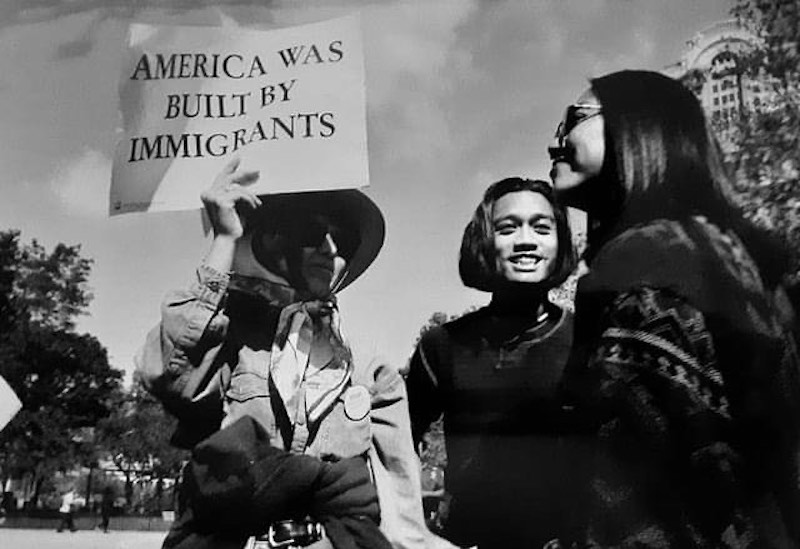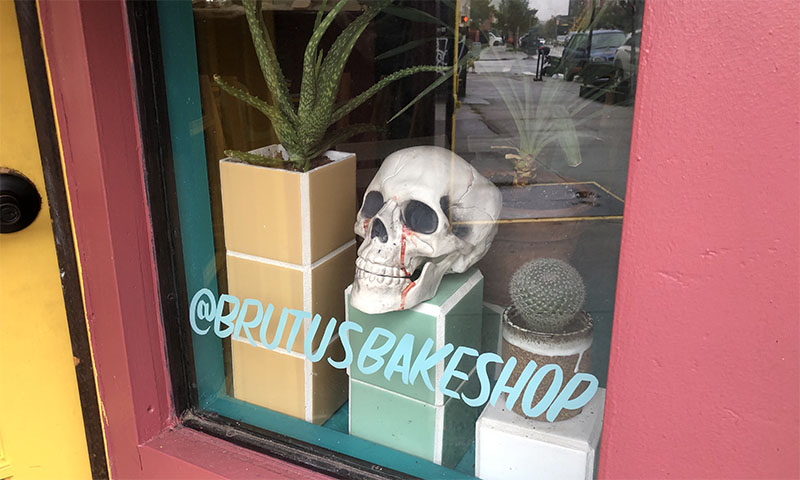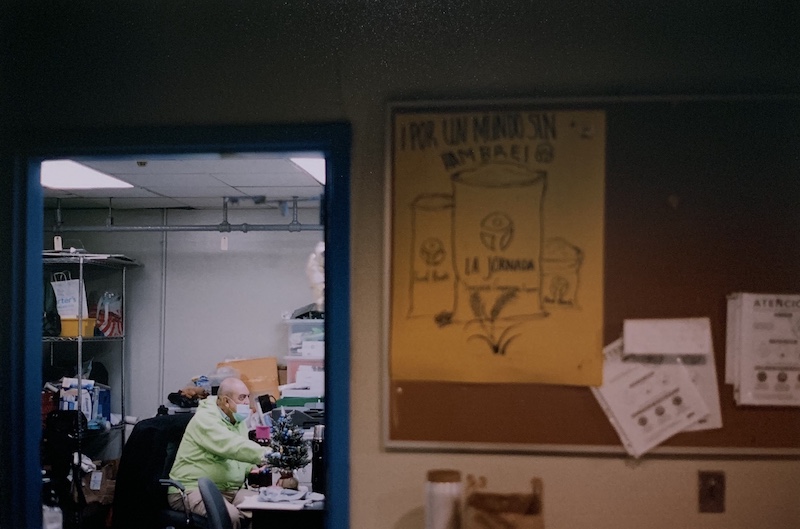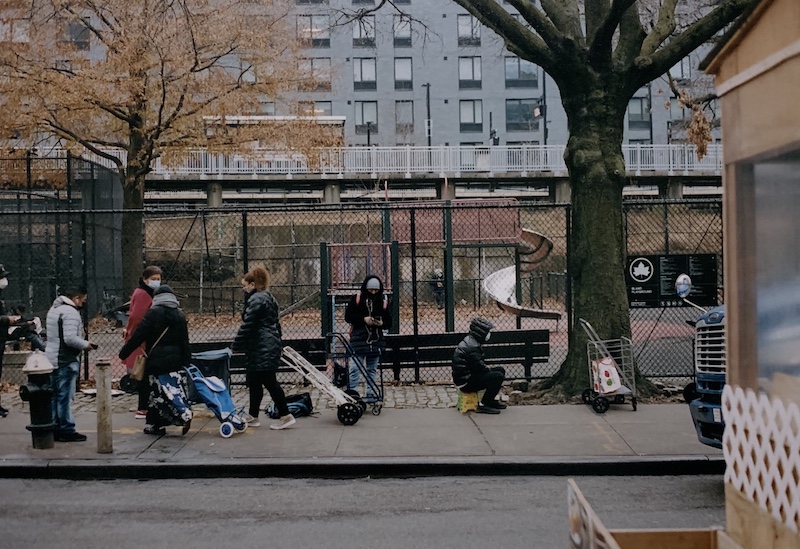
By Yasmeen Persaud | Feb. 9, 2021
Photojournalist Corky Lee, who died of COVID-19 last month, was widely mourned by fellow photographers and the communities he documented. Tributes acclaimed his groundbreaking work chronicling the Asian American experience.
Lee’s death also touched members of the Baruch College community, professors and former editors of this publication, Dollars & Sense, who remembered his guidance when they came to know him at a Manhattan company that printed issues of the student magazine in the 1980s.
“What Corky did for us was he first treated us as professionals. We were students, we were just learning. He let us come to the plant and let us be involved in the process,” said JoMarie Fecci, a Baruch alumna and photojournalist. As a former D&S photo and art director, Fecci worked with Lee during that time.
Lee came to mentor Baruch students after Professor Emeritus Roslyn Bernstein of Baruch’s Journalism Department, who founded D&S in 1979, serendipitously discovered the printing press, Expedi, where Lee worked.
“We used to get a lot of flyers in our neighborhood and there were a lot of Asians where I lived near Chinatown,” Professor Bernstein said. “Sometimes I’d have six or seven or eight flyers and I’d look at them and they’d be in Chinese with some English, and always in a tiny corner it would say, ‘Printed by Expedi Printers’.”
After arranging for Expedi to print its issues, D&S staff would often visit its offices, exploring the printing process and gaining pointers under Lee’s guidance (D&S moved to its current online-only format in 2009).
“We came there really because we looked upon Corky, because Corky cared. If something was wrong, Corky was the first person to fix it,” Professor Bernstein added.
Lee, a Queens native and CUNY graduate, passed away on Jan. 27 at 73. He dedicated his life to telling stories and was a founding member of the Asian American Journalists Association.

“He did what he loved, and we loved him for it,” a statement released by his family said.
His photojournalism career grew out of his deep concerns over inaccuracies in a popular historical photo. It seemed as if the photograph was famous for all the wrong reasons, and Lee needed to make things right.
“Corky said he was inspired to become a photographer after he couldn’t find a single Chinese face in the crowd of a famous 1869 photograph celebrating the completion of the Transcontinental Railroad, despite the many Chinese workers involved,” the AAJA said in a statement honoring Lee’s legacy. “In 2002, he recreated the photo — this time, with descendants of the Chinese workers who had been left out and again on the 150th anniversary of the completion of the railroad.”

Lee’s legacy also ran deep for the students who looked up to him. “He really took the time to explain to us how to do things,” Fecci said. “I really appreciated that, that sharing with us.”
Terry Berkowitz, professor emeritus of art in Baruch’s Department of Fine and Performing Arts, remembers conversations with Lee in his Expedi office when he talked about his passion for photography and where she witnessed his impact on Baruch students.
“I think Corky really helped move the Chinese and Chinatown communities into a much better situation, much better visibility,” Professor Berkowitz said. “Corky was a primary influence on the students he touched.”
Professor Bernstein’s vision of giving Baruch’s diverse students a platform to write passionate, in-depth stories aligned with Lee’s.
“He was truly passionate about the things that mattered to him. I think he looked at our staff, Black, White, Asian, immigrant, non-immigrant, Baruch! A big mix, and he loved working with us and working with young people,” Professor Bernstein said.

Lee’s importance to the wider community was evident at a virtual gathering on Feb. 5, organized by La Mama and the Asian American Community Arts Alliance, and attended by more than 400 family members, friends and admirers. His legacy was honored in tributes and performances.
“You helped me to understand the power and strength in naming oneself and working in solidarity within and across numerous communities,” said close friend Angel Velasco Shaw.
“Corky never made anyone feel any lesser than who they are,” said Siraj Huda, who worked with Lee at Expedi Printing from 1989 to 1993. Huda noted that Lee honored his Indian American heritage and brought their “plight and Asians to the forefront.”
Notable attendees included U.S. Rep. Grace Meng and state Sen. John Liu, who said: “If not for Corky Lee, much of our history would have been unnoticed, unchronicled, and forgotten.”
A Further Conversation: Delving into D&S History
Photojournalist JoMarie Fecci recalls her work as the art and photo director for D&S and shares her thoughts on Lee’s legacy. Her interview with D&S co-editor-in-chief Yasmeen Persaud was edited for length.

What was your past role at Dollars & Sense?
Fecci: I was a student at Baruch in the 1980s. At that time, Dollars & Sense was produced at Baruch and it was printed out of Expedi where Corky worked. In those days, we had to do actual mechanicals. Before they had desktop publishing and our modern way of doing things, you literally had to typeset your pages. I’d put it and paste them onto boards. It was a lot more physically technical, whereas now we just put it all together on a computer. We actually had to do these mechanical boards and bring them to the printer physically and they would print the book. The process was less forgiving than today, there’s so many other ways to change things and fix things.
Describe Lee’s involvement in the D&S printing process.
Fecci: The print plant was located in the meatpacking district back then, and the meatpacking district was not a trendy place. It was a very industrial area and this print shop was down by the water. He wasn’t involved from the beginning to the end, because the process back then was almost a whole year to do one magazine. Preparing to print takes a lot less time, and that was where he was involved.
What was your first encounter with Lee?
Fecci: Roslyn Bernstein was the founder of the magazine and she was our mentor for so many students who went through Dollars & Sense. She helped us and guided us and she would bring us to Corky and let him share his knowledge. The first time I met him was at Expedi’s print office before we were actually delivering the magazine, learning what we had to do.
D&S is now fully online. Tell us how the magazine worked in the 1980’s and how roles were determined?

Fecci: We kind of grew into our roles. We definitely had distinct roles and I want to say Roslyn kind of handpicked people, honestly, who were right for the role. We didn’t really vote on it, but people volunteered for what they wanted to do in the magazine, and we had our editor, who actually ended up becoming an editor and writer afterwards. We were super supported by Roslyn and who she brought in.
Most of our work was the same as yours, it’s just the technology changed and it used to be physically hands-on, we had glue on our hands! We had students who would get assigned photography and go shoot different things. And some writers would have photos that worked for their stories. Is it more content creators for you now? The writer does the imagery as well?
Yes, we allow the writer to have the opportunity to do photos. We’re trying this year to emphasize photos more, especially during the pandemic. It’s hard to take photos even though photojournalists are doing it, we want to make sure we’re safe. In terms of if we don’t get photos for our stories, we sometimes have our main reporters function as main photographers and go out and do it.
Fecci: So, it’s more integrated. After Dollars & Sense, I went on to work as a photojournalist for many years and although I did do text and picture packages and mainly bundle, typically as a photographer you just took pictures, the writer did the story.
How has Lee’s work over the years inspired you as a photojournalist?
Fecci: His work told the story of the people. You know you can tell stories based on the notables, based on the white male report here, or you tell the story based on the history of the people, the history of everyone. He went, and it wasn’t about political leaders or leaders in his community, it was about the people and what went on. As a photographer, I tried to get close to my subjects, to get the human side of the story. I specialized in military and areas of conflict, refugee issues. Conflict photography, and in a situation that’s crazy when everything is going on, what’s important to me was telling the story of the people. A very important angle. Soldiers across lines have more in common with each other than they do different. The humanity of it all, which Corky’s work was about.
We hear about journalists writing the first draft of history, when I think about that statement, I think about Corky. I think about how he shifted coverage of Asian Americans, and I feel like Corky’s work speaks through his photos, any good photojournalist, that’s their power.
Fecci: When you read through the text, you read it but when you see the photo, “a picture is worth a thousand words,” is really true. Everybody wants video but the thing that always sticks in people’s minds is one still image. Those images come to define history even for people who aren’t going to read through all the details of history, they are little bookmarks or think of a timeline. The images are there along the timeline and tell a story for people who don’t want to read deeply. It’s so important what Corky did. When he was first getting out there, you didn’t see a lot of Asian Americans or Chinese in images. He changed that, he really did. We’re here, we’re part of this community, we’re part of this country, we’re part of this culture, why are we invisible?












